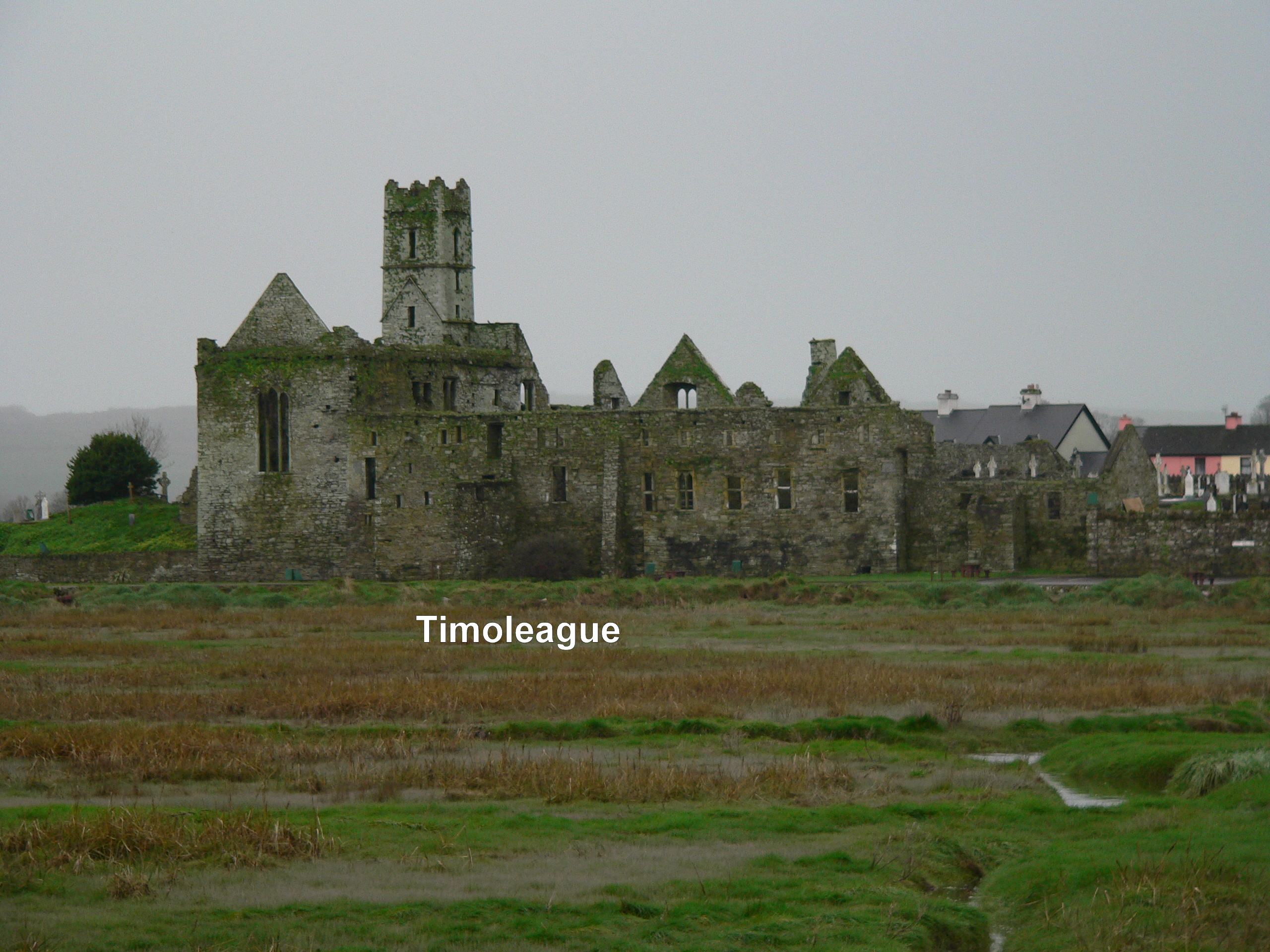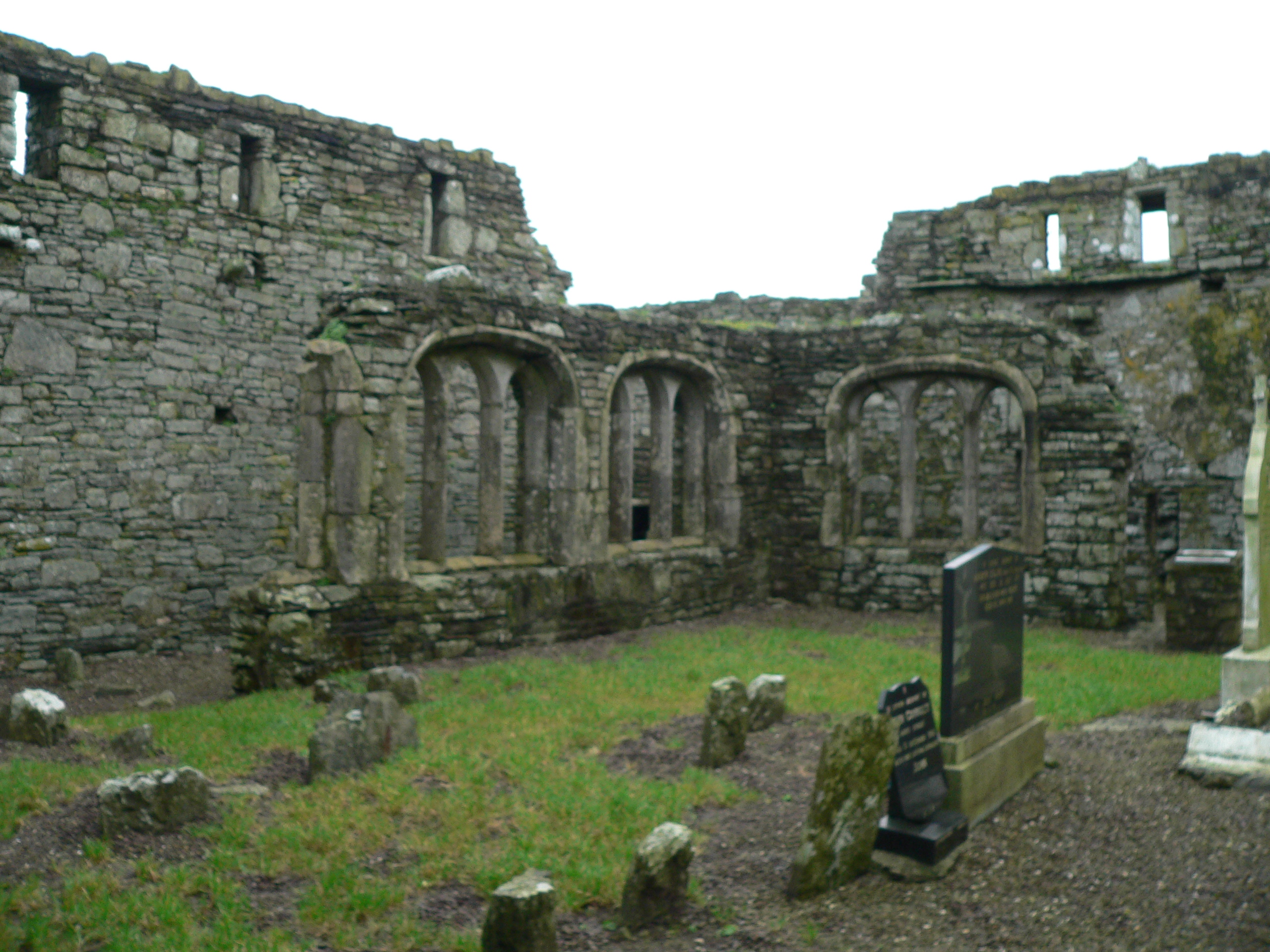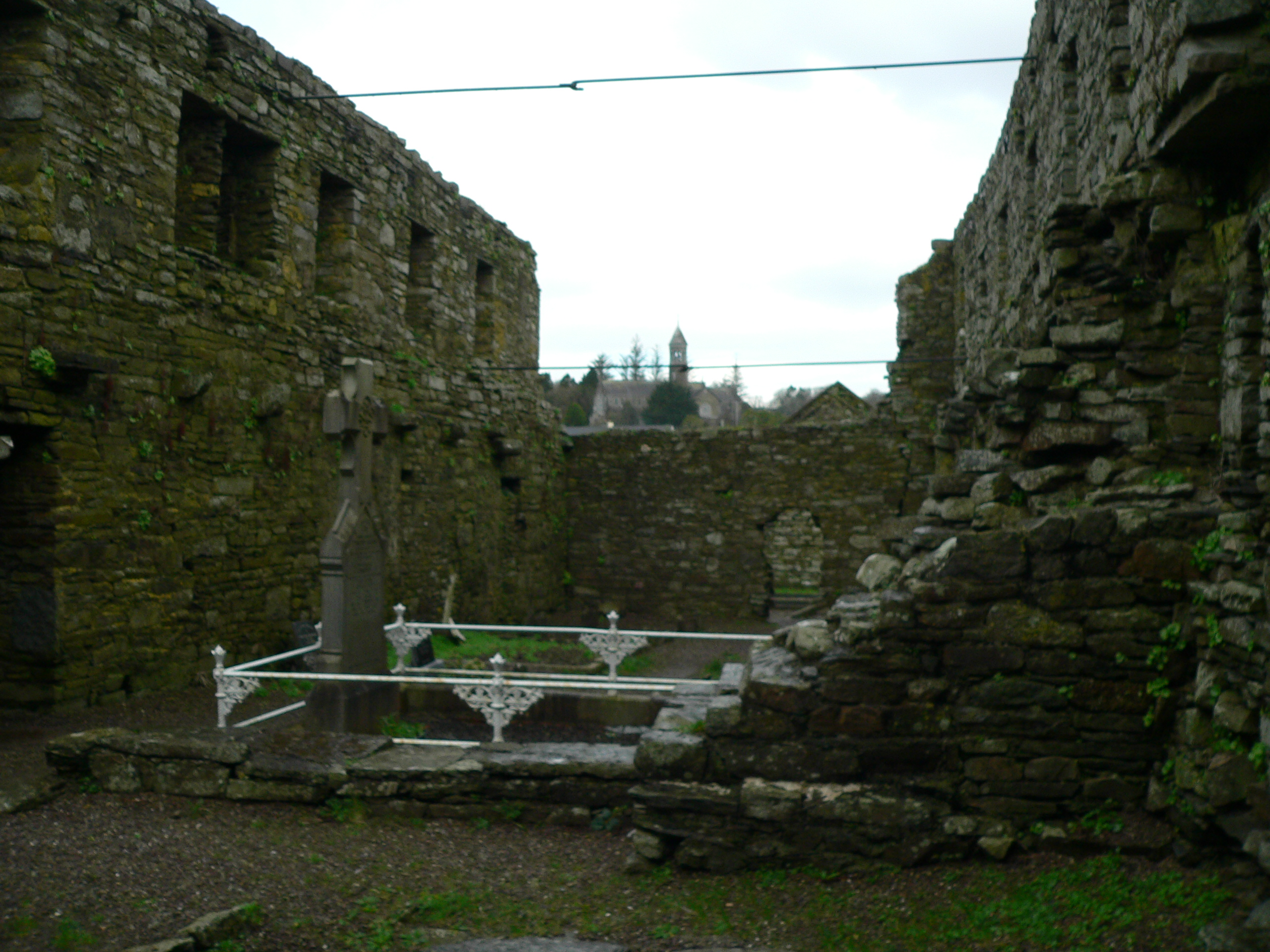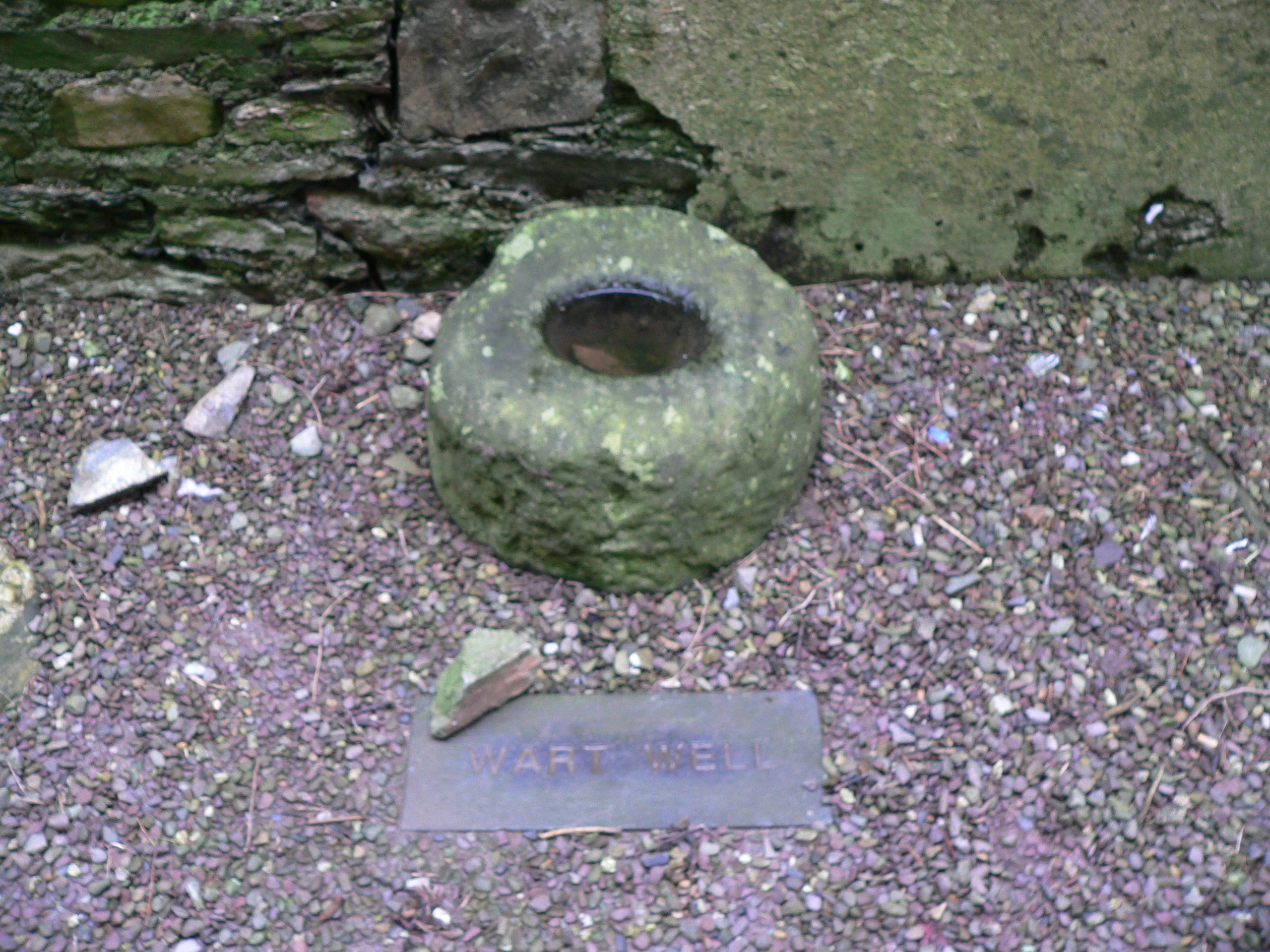
Along the road between Kinsale and Clonakilty, near Courtmacsherry is the village of Timoleague which is dominated by the great seaside abbey ruin, a remnant of a 13th century Franciscan Friary. The abbey is built on the site of a former monastery founded by St. Molaga in the 7th century. Timoleague means – “house of Molaga.”
St. Molaga, as the story goes was a local boy who went to study the rule of St. Columba in Iona and then went on to Wales where he became good friends with St. David. He returned to Ireland and founded several monastic communities, but Timoleague was his greatest – and his last. He died here – probably of the plague. He and his followers were committed to helping those suffering from the disease when the plague hit Ireland in the late 7th century.
A story is told about how St. Molaga originally wanted to build his monastery farther up the estuary. But as he and his followers labored on the buildings by day, they all collapsed by night. St. Molaga took this as a sign that the Lord did not approve of the location. So he blessed a candle, lodged it in a rolled up sheath, set it alight and released it on the bay praying that God would help him find the perfect location for his new religious community. The candle floated until it stopped at the where the Timoleague ruin now stands. St. Molaga built his monastery on the sea and six hundred years later the Franciscans built an abbey on the foundations of St. Molaga’s monastery. The ruins of that monastery are what visitor’s see today.
I found this thin place through the recommendation of Mr. Noel O’Connor who was my host at Ashgrove Bed and Breakfast in Bandon. Over breakfast I asked him, “What is the most mystical place around here?” He was caught off-guard and hesitated. As a forma garda (police officer) I suspect he wasn’t invited to discuss “mystical” or thin places often. After pausing to give it some thought, he told me that many pilgrims go to Timoleague to pray and reflect. So I took his advise and I went to Timoleague.
What remains is a beautiful ruin now made into a comfortable public space on the scenic Courtmacsherry Harbor. When the monastery was active, boats used to sail right up to abbey, and the village grew around the activities focused there. Past the picnic tables and the stone wall are bones of the old religious house with haunting traces of how life existed there so many years ago.

Two favorite spaces for me were the dining room and the cloister walk. Pictured above is the cloister garth the part of a corner wall still standing. Monasteries typically had these square cloister walks with an open court-yard type garth in the center. The walks were the center of the the cloister and often used for doing “rounds” or walking and praying in a circular path. The walls bordering the garth had gothic-style windows to look out. I love to trace the steps of those who once walked and prayed here. On account I read said that at one corner of the walk the incorrupt body of a monk buried centuries before was discovered. He was reinterred on the grounds.
Another peaceful spot here is the refectory or dining area. It’s a large rectangular room off the back of the ruin with five tall windows (frames still in tact) looking out over the sea. Next to this area is a cavity wall, with indentations known as the fairy cupboards. It was from this room that children discovered an ancient book buried under one of the flagstones. They destroyed it and only the shred of the cover was found.

In the sacristy is the ancient holy water font, now known as the Wart Well. It is said to heal warts when those afflicted dip the warts into the water.
The monastery was sacked in the 1600s and three monks escaped by boat and took with them the Timoleague chalice for safe keeping. It was discovered in an old box in a home in the village many years ago and is now held by one of the priests residing in Timoleague.
In the distance behind the ruin a round tower (new) can be seen atop a church. This is the Catholic Church dedicated to the Nativity of the Blessed Mother. One of Henry Clark’s last stain glass masterpieces can be found here.
Timoleague is a haunting site full of mystery and charged with the energy of the past. It is one of the stops on the Thin Places Mystical Tour of Ireland in May of 2011.
Holy House of ivied gables
That wert once the country’s pride
Houseless now in weary wandering
Roam your inmates far and wide
~from Lament Over the Ruins of the Abbey of Timoleague
John Collins -1814


We were really close to Timoleague and missed it. I love those old churches. One of my favorites is Corcomroe Abbey in the Burren. I think John O’Donohue used to do an Easter Mass there. The place makes burst into spontaneous each time I go. It’s very special. BTW have you ever been to Inchagoill Island? It’s rather amazing. There is a 5th century church ruin there that has some association with St. Patrick.
You know, I went to Corcomroe Abbey for the first time about 15 years ago and went back a few times after that. Last year my husband and I went and I was rather sorry about the new renovations there. They’ve added a glass covering to protect the inside from water damage and have put all kinds of supports around. While I know it’s for preservation, it’s kind of sad to see the interruption of modern steel and glass. One can’t even get a decent picture of the high cross. That whole area around the Burren is just enchanting.
I’ve not heard of Inchagoill Island. Where is it? I’d love to visit.
Mindie,
Did you post this just for me, because you knew I love the drive around the sea inlet there by Timoleague? We sat out back of the abbey, ate lunch at some picnic tables there, watched the birds and took pictures of the palm trees (“Aloha from sunny Ireland”)
Inchagoill is near one of our other most favorite areas of Ireland – Cong. Inchagoill is one of the many islands on Lough Corrib.
Can’t wait to be back on the Emerald Isle in June!!
Slan,
Kathy
(from Engaging Ireland)
Kathy, I did post it for you. I’m trying to get all my posts about the sites on the tour done in January which is about 20 posts. Timoleague was slated for Jan 21st but when you mentioned it on Twitter, I went back to my travel notes on Timoleague and reread them. Then I scanned the little booklet I bought there about Timoleague and got so revved up remembering this special place. So I moved it up in or honor – and actually spent a lot more time on it than I thought I would. What a special place.
Can’t believe Inchagoill is near Cong. I’ve been to Cong so many times, but never heard of this little church. Mayo is slated for next year so maybe we’ll get out there. Sounds like a special place.
Sorry we won’t be in Ireland together, but I’ll love hearing your stories.
Slainte,
mb
Having been born and reared until the age of 9 in Timoleague it gives me great pleasure to know that you who come from the States enjoy the enchantment of this little gem of our Irish History – a reminder of our once wonderful and lively Christian Heritage and also of the Sad Legacy of our past domination which can be seen in the Ruins of Timoleague together with the Ruins of Abbeys & Monasteries all over Ireland. As children we played in the Abbey grounds almost daily as we passed it on the way home from school. I hope that you will enjoy many future visits.
Happy Christmas & a very peaceful, healthy and prosperous New Year
Kind Regards
Adrian Mc Guinness
Thank you, Adrian. Comments such as yours are so welcome here. What could be more inspiring that native memories of a thin place. When walking through Timoleague, I could sense the memories of so many people – so much work, so much sorrow, so much celebration. It doesn’t surprise me that children playing in the ruins would be part of that memory mosaic.
I would have never known about timoleague were it not for my chance conversation with Mr. O’connor. So glad he suggested it.
Hope you had a happy Christmas and hope your new year is full of joy.